The great Bosham DNA harvest sees freedom get murdered too
Sussex Police are currently conducting the largest collection of volunteered DNA in the force’s history. The operation is being executed all in the name of hunting down the killer of Valerie Graves, a 55 year old woman who was battered to death in December 2013 in the coastal village of Bosham, as she house-sat for friends of her family. At the commencement of the operation Detective Superintendent Nick May announced that police were looking for around 5000 private and innocent citizens, living in or visiting an area approximately 5 or 6 square miles around the village, to surrender biometric data into the hands of the State for an undeclared and indefinite period. Unfortunately at the time of writing over 1200 well-meaning but sadly deceived people have been persuaded to submit themselves to a session in which their photo is taken, their thumb print is obtained along with a sample of DNA swabbed from inside their mouth – and most outrageously where they are convinced into signing a form signalling their consent to the harvesting of all this most private of data. The reader might be surprised at the tone of outright disapproval encountered, and think the author unreasonable for it in the context of what seems like a hard job that police have to do. However, it appears very much that the police are being less than honourable, and their operation is less to do with solving crime and more to do with asserting the superiority of the collectivised police state over the ancient and fundamental rights of the individual; it is about exploiting the good will of citizens who have been exposed to a crisis for the purpose of collecting a crop of data which its donors will lose control over.
There are three areas of evidence that will lead to these conclusions if examined. Firstly, given the information regarding the case that has been made available to the public, the police appear to be following an erroneous line of investigation. Of course, the public might not be privy to all the data, but this is perhaps a moot point – what we can see of the police investigation should not warrant the sort of public confidence to the extent whereby police expect such unquestioning public compliance and obedience as they clearly do. The second area is therefore related: the attitude of the police in their execution of this operation speaks of an alarming disregard for the protections that have curtailed the arbitrary powers of previous generations of what is supposed to be a public service that operates only by the consent of the people. Thirdly, the parameters that describe the breadth of the DNA search are highly suspect, and completely illogical; in fact, they are so random that there is a very high chance, if not a 100% probability, that they will fail to identify the murderer.
When considering what the purpose for the DNA harvest by Sussex Police could be for, if it is not for finding a murderer, and the determined way in which it is being carried out, the only conclusion the author can come to is that the objective is the stocking of a consensual DNA database – where the consent has been gained by deception, but nevertheless guarantees that the records are not subject to laws regarding forced DNA capture. This would not be a surprise to many of us who have discovered in the last ten years that the country is essentially ruled by a one-party dictatorship that only offers the illusion of choice; we should expect the constant degeneration of the government and expect increasing authoritarianism as it seeks to protect itself from us. And most of us who have travelled the road of this realisation do it from an observational perspective where the injustices are always happening to other people. The Bosham DNA harvest would have been another remote case that the author would have been distressed to learn about, but there is something very different about it which makes it a more immediate concern. In 2014, the author moved into the afflicted area and finds himself one of the innocent 5000 whom the police are determined to take a DNA sample from. This is not going to be an outcome. The maxim at this site is to act in your liberty to defend your liberty, and so the Sussex Police have a big problem.
The reader might have noticed an incongruity in the above paragraph that may also then have caused some perplexity; so, let us deal first with the issue of the illogical search parameters.
The illogical search parameters
In October 2014 the police announced that they had found a partial sample of male DNA on a hammer which they thought could be the murder weapon. Later they announced that that evidence wasn’t complete enough to compare with the National DNA Database. The NDNAD is where the DNA profiles of all convicted criminals are kept; it also contains, for a certain amount of time before it must be deleted, the information of innocents who have been arrested and made suspects but who are then cleared or aren’t charged. However, because this resource had been deemed ineffective for the purposes of Sussex Police, it was apparently decided that a search was required in order to find new DNA to test against the hammer sample. Moreover, the search would focus on “all men over 17 who live, work in or visit Bosham” (source).
This criteria doesn’t take much analysis to see how vague it is. Presumably it was referring to contemporary circumstances, so in that case it must have meant all men over 17 who live, work in or visit Bosham at the time of the announcement. This should have been fairly simple for men who lived and worked in Bosham – they would have known who they were. But the announcement of the criteria was in January 2015. The murder was a year before. What if someone didn’t live or work in Bosham back then? Would they still be liable to submit to a DNA extraction? Then there is the “visiting” part to consider also. Common sense suggests that it is referring to people who visit Bosham regularly – someone who would have been visiting at the time of the murder. However, if that is the case, then why are police only interested in people currently working and living in Bosham and not those who were doing the same before 2014?
Right from the very off, the police were hinting at a wider geographical scope for their investigation than the confines of Bosham itself, but with no clear definition. That came eventually by the 5th February (certainly as far as the author was concerned) and after the police were a week into the harvest. The new parameters for the search were all men of 17 or over who lived in a geographical area specified by an accompanying map (see Figure 1), or who lived, worked or visited the area in December 2013. [Update, 15/11/2019: the last sentence of this paragraph was badly written. The search still targeted people living in the area at the time of the investigation].
Now we have something that is a lot less abstract to work with, we can examine the problems with the targeting for the DNA harvest in respect of a certain nonsense that arises from it. The police call their operation an elimination of as many individuals as possible against the offender’s DNA, but if the murderer is not being sought because he does not fall into the search criteria, then it doesn’t matter if everyone sought after by the police eliminates themselves. We can express this absurdity another way: if the search parameters are flawed, which they most certainly are, there will be a 100% failure rate; this is a logical prediction that one can make ahead of any practical application of the mass screening.
What the police haven’t specifically asked for is people who sneaked into Bosham in the later and small hours of the 29th and 30th December, the fateful night, irrespective of wherever else they lived, worked or visited. Of course, this narrow set would have yielded no volunteers – but as this result is essentially down to executing the wrong tactics along the wrong line of investigation – something that we’ll come to momentarily – it would be no more of a failed operation than what the police are currently engaged in. Regarding the actual criteria as given, the main problem stems from how the police have seemingly forgotten about the invention of the internal combustion engine. It is quicker to travel in a car from Portsmouth, and all the districts in between, than it is to walk to Bosham from the village of Fishbourne. However, the geographical range stipulated by police rejects the possibility of anyone travelling from a feasible distance outside the target area to commit the crime. The village of Nutbourne is as far from Bosham as Fishbourne is, but for some arbitrary reason, it is only the latter village that is targeted. Then there is the question of why stop at Fishbourne? It is only the width of the A27 that cuts the target geographical area off from residential areas of Chichester; maybe Fishbourne residents wouldn’t like the fact, but it has essentially become a suburb of the city. And yet, Sussex Police are not expecting volunteers who live only a matter of seconds away (in the time it takes for a car to travel the distance) on the wrong side of the line. A person who never heard of Valerie Graves in Chichester or Nutbourne is just as likely to have killed her as a person who never heard of her in Fishbourne, or in Bosham for that matter. The geographical targeting is in fact preposterous.
There are other glaring problems; consider these scenarios: if you visited Bosham from 100 miles away over Christmas 2013, not knowing Valerie Graves from Adam, then the police are more interested in you than they are in anyone who may have even briefly came across her in other, much nearer parts of the country, who could have travelled to confront her without being missed. If you travelled to Bosham from Outer Mongolia and arrived on New Years Day 2014, to live in the village, then the police would be more interested in you than they would be in absolutely anyone who had lived there but had moved away during the 12 months of 2014.
And before the author is accused of denying the police common sense in the application of their search parameters, let’s review the case of 82 year old Keith Baxter. On the first day of the DNA harvest, he was “persuaded” to take part – even though at the time of the murder he had been in the USA directing a play (source). This man cannot possibly have been screened so as to eliminate him against the murderer’s DNA. The only conclusion one can make from this and all the other information is that the police are more interested in capturing a contemporary snap shot of DNA from an area that is defined according to some other rationale than a realistic concept regarding the likely haunts of a murderer.
The wrong line of investigation
In the very first days after the incident unnamed detectives were quoted in the press as saying that they had “strong suspicions” that the murderer was someone the victim knew, although they stressed that there were other lines of investigation. The following scenarios have been mentioned at one time or another in the media – some featured in statements made by police, and it would be reasonable to suppose that all others were theories that had originated with police rather than as speculative writing by any particular journalist: that Graves was killed by an intruder who was burglarising the property; that Graves was killed as she disturbed boat thieves; that Graves was mistaken for someone else who had been targeted; that Graves was targeted herself; that a mentally ill person (therefore without a motive apart from derangement) killed Graves; that a transitory migrant looking for work killed her.
Discussing the evidence to establish which line of investigation would be the most credible would take another article dedicated to the subject; so we’ll skip to what would be the author’s conclusion. According to the evidence that is publically available, and reading between the lines about the information that the police have put into the public domain, it is more likely that the assailant was known to the victim than he or she was a random intruder whose motive was burglary. The random burglary concept must be the main, if not the sole driving force behind the DNA screening – and yet the police have refused to say that there definitely was a burglary, or even to clarify how an intrusion could have taken place (Nick May: “One of the lines of inquiry is that this act has been committed by somebody unconnected to Valerie, and yes that is a possibility. I’m not going to go into the specifics of how somebody may or may not have entered the house” – source). I suggest that police can’t tell the public it was a burglary because that would be to tell an untruth. It must be stressed that there is no effort here to imply guilt upon any individual who we know to have been known to Graves; the point is to explain that if there is no burglary, then there is no motive for individuals who did not know her. Seeing as Valerie Graves usually lived in Bracklesham Bay – 8 miles south of Chichester, and close by to the town of Selsey with a population of 10,000 – arguably the number of people in the Bosham area that didn’t have a motive to kill her would be extremely high – presumably a figure in the high 90 percents. And yet 100% of the male population are being treated as suspects.
The second matter of interest in the same category is the how the supposed murder weapon, the hammer, has never been satisfactorily linked to the murder. Graves was staying at a house in Smuggler’s Lane. The hammer was found in nearby Hoe Lane – 800 yards away from the murder scene, and in the middle of nowhere. Of course, in the immediate period after the discovery of this hammer there could have been no information on how it harboured DNA – this would have taken a while to process, and the news finally came in the Autumn of 2014. However, in January 2014, and without any proof that the hammer had anything to do with Valerie Graves, the police proceeded to arrest a man who lived close by in the vicinity of where it had been discovered – an incredibly irrational reaction.
The police have made much of this hammer as being the murder weapon, and have implied it supports their burglary theory, and yet at no time have they explicitly talked about it also yielding up a sample belonging to Valerie Graves – not that the author has been able to find, at least (which is not for want of trying). If the hammer cannot be linked to Valerie Graves, it can’t be considered as the murder weapon. This means that the male DNA on the hammer would be entirely innocent, and the mass screening program to match collected DNA, if it was successful, would incriminate an entirely innocent party. Even if it did have Graves’ DNA on it, that still wouldn’t justify a mass screening to find a random intruder. The police must be aware that any weak link between Graves and the hammer would get a murder case thrown out of court, so the author wonders if there is another sample of DNA that the police won’t tell the public about, for whatever reason. I’ll leave the reader to see between the lines.
Deception by police to create a consensual database?
The idea of the police omitting or misrepresenting information to the public offers a nice segue to a section about how the public may be being deceived by police. Firstly, there is the issue of how the mass screening of DNA was triggered by what we were told about the limitations of the hammer DNA. The following is an extract from a Telegraph article entitled “Bosham: the Midsomer Murders village where everybody is a suspect”:
The hammer was retrieved at a time when much of the area was submerged in flood water. As a result, the sample is not complete enough for a search on the national DNA database. It can, however, be used to eliminate suspects.
This is a more or less accurate portrayal of the police’s position regarding the partial DNA sample and its relationship with the NDNAD – and it is a very strange position to take. The National DNA Database Strategy Board Annual Report 2012-13 (here) contains a pictorial explanation of how a partial DNA sample is matched to records on the database – these are the images in Figure 2, and they are from page 6 of the report. According to the NDNAS Strategy Board, then, the partial DNA found on the hammer should be able to be matched to the database to a varying degree of success depending on how partial it is. The point is, however, if it can’t be matched to the database, then it appears there is no reason to expect that it could be matched to any other newly collected DNA either. Any full DNA sample has 20 slots for DNA information (plus ones for the chromosome data). All full DNA samples have the same structure. Full DNA samples on the NDNAD will have the same structure as new ones collected in a mass screening. It is very hard to understand how it could be that the collected DNA would render results against the supposed hammer partial sample whereas the existing database would not.
The grander deception seems to take place for any and every volunteering individual when he gets to a screening station where he is invited to complete and sign a consent form – a copy of one was photographed and appeared in corporate-media so that we can read what it says. Incidentally, this moment cannot be allowed to pass without mentioning that Councillor Myles Cullen is a Tory politician who lives in Emsworth; he is a cabinet member for commercial services. (I suggest people in Bosham vote him out of office as soon as they are able).
Here is what the consent form appears to say in its most pertinent parts:
* * *
CONSENT SIGNATURE – You are NOT a Suspect
DNA – I consent to a DNA sample (mouth swab) being taken for forensic analysis. I understand that the resulting profile will only be compared to the crime stain profile(s) from this enquiry and that the sample will be destroyed at the end of the case. I have been advised that the person taking this sample may be required to give evidence and/or provide a written statement to police in relation to the sample taken.
THUMB PRINT – I consent to my thumb print being taken for identification and elimination purposes. I understand that the sample will be destroyed at the end of this case.
* * *
To fully understand what a “volunteer” is consenting to when signing these declarations he needs to know the difference between what he is supplying and what can be processed from that material. As we already know, DNA is stored on the NDNAD. Prints, on the other hand, are stored on something called IDENT1, the national fingerprint database. Now, because a database is digital, it cannot actually store the physical material that one supplies – this needs to be processed. The technology to digitise a print is fairly easy to imagine, but even if we think of it existing as an image in a database in fact it appears that a print is reduced to something called minutiae, or the major features of a print, which presumably can be represented purely in data. It’s the same with a DNA sample. Its digital form has a name – a profile – and we have seen this word used a lot in relation to the sampling of DNA perhaps without realising the implications of the relationship.
Look at the words of the consent form again: it says, in both cases, that only the sample will be destroyed at the end of the case. The form never says that the DNA profile will be destroyed – or deleted, which would be the more appropriate word to use. The form, in fact, never reveals to the volunteer the existence of the profile – it will remain a secret. In addition, it is not clear what the word “sample” refers to in the context of the thumb print section of the form. It has already been defined on the form as being the DNA sample – THE sample. In any case, as previously discussed, it is feasible that the print sample will be a different thing altogether from digital data representing it; in anycase, the consent form is always about the physical sample and not its digital record – which remains unmentioned.
Also we must pay attention to when the form says any termination in the life of the sample would take place: at the end of the case. This begs the question, when would that be if it can never be solved? And it also allows us to demonstrate how the police have been overtly misrepresenting facts to do with the screening in order to make the public more responsive. In that MailOnline article that retailed the story of Myles Cullen, Detective Superintendent Nick May is cited as saying the following:
[The DNA sample is] then packaged up and couriered to our forensic provider where the samples taken here are compared against the profile of the person that we believe murdered Valerie.
If that’s a negative then the samples taken here are destroyed.
This statement is not true according to the consent form. And again, there is an impression given that any retention of data terminates beyond the destruction of the sample – not necessarily true according to the consent form.
Now it occurs to the author that the volunteered biometric data must have to be stored on a database that, because it is consented to, is beyond the safeguards put in place by the Protection of Freedoms Act 2012, which insists on the deletion of information extracted without consent from people who the police encounter as suspected criminals. Moreover it seems that the people who provided it may not have future cause or capability to have that information deleted because of how it was acquired by consent.
Well, of course, in actual fact the material on any consensual database that may or may not be being created by the Valerie Graves’ murder hunt has been acquired by confidence trickery and coercion; and that brings us to the penultimate section of this rather lengthy article.
The myth of the volunteer
Consider the wording of this extract which was taken from the publicity posters created by police to encourage participation in their mass screening programme (see Figure 4):
You are asked to make every effort to attend one of the above sessions but if due to exceptional circumstances you are unable to do so, please contact [contact information].
Let’s try and square a circle; the mass screening is voluntary, and yet the police have an expectation that everyone who is liable either goes to great lengths to attend – perhaps even to the point of relegating their own personal priorities – or somehow otherwise accounts for himself as to why he cannot. How can this be? The same poster has this to say about non-attendance:
As most people do voluntarily give their DNA when asked then police obviously have to look more closely at those who do not and consider what the reason may be.
The problem with this statement is the assertion that people volunteer – is that true, or is it because they feel coerced by police to co-operate?
Here is another statement given to the Chichester Observer by District commander Chief Inspector Justin Burtenshaw:
Anyone who doesn’t come down [to a screening centre] – it gives us another focus to go and see them and find out why they don’t want to.
So the threat is clear: if someone does not participate in the screening, then they will become the attention of narrower police focus.
If we don’t think that police have actually actively coerced people to take part in their DNA harvest, perhaps we should consider this: when the process began, the corporate-media ran stories about a single drop-in centre at a hotel in Bosham where people could attend if they felt public spirited enough to. Here is presented the nice, smiley public face of the Bosham DNA harvest. In reality, it wasn’t long before police had mobile units at supermarkets with officers at the exit doors to find out if people were candidates for the process. They were in the lobby of the city’s college doing the same. Here was a kind of warrantless checkpoint, then. As disgraceful as that was, the police soon resorted to having their mobile units visit residential areas where they knocked on doors to “encourage” the householder to become a “volunteer”. The author managed to film one of the police’s victims in his neighbourhood being frogmarched to the mobile unit by two policemen (see Figure 5).
Legally the police can say that this is voluntary attendance, but in reality this sort of DNA extraction is done very much in the spirit of coercion. In fact, we need to call it what it is: coercion. Moreover, it is indeed right and true to say that everyone who is the target of this police investigation has been made a suspect in the first instance – and because police categorically deny this, not at least by the wording on the screening consent form, the case needs to be stated:
DNA is usually taken when the police believe the donor is a candidate for having committed a crime. So the DNA harvest is not like the traditional sort of door-to-door questioning that may once have taken place in the same circumstances. That sort of exercise would have been for identifying prima facie suspicion. When people have DNA taken in the first instance, or even are expected to, then this is equivalent in the traditional process as having been arrested – but with a big difference: the donor is made a suspect with no prima facie evidence. The presumption is of guilt, and the donor is then tested, or otherwise required to prove his innocence. Arguably police rely on the psychological effects of the apportioning of guilt in the first instance to motivate the public to want to take part in an exercise to refute that suspect status. So when two authority figures appear on their doorstep to personally reinforce the perception of guilt, it is completely understandable that many a householder would feel under extreme pressure to “volunteer” into the process. If Sussex Police claim that they have collected DNA voluntarily, then this should not be taken on face value; for the most part it is a highly inaccurate portrayal of their investigation.
The assertion of the collectivised police state
To say that Sussex Police have been asserting the supremacy of the collectivised police state to the detriment of individual and ancient civil rights would more accurately describe what has been going on in Bosham and its environs – but what does that mean exactly?
Well, we have a situation where the murder of an individual is taken as a pretext for the police, who have been set up as wardens for collectivised society (think communist, or communitarian), to appeal to the welfare of that collective. That being done, the rights of the individual are perceived as being unimportant. However, in our body politic as it should be, the rights of the individual should never come second to the collective because otherwise there would be tyranny. Claiming to be able to persecute people for the common good is an expression of authoritarianism, and that is what the Sussex Police have been doing in their Valerie Graves murder investigation.
Of course, people will respond to this by saying that the police must do a job and we must make sacrifices to allow them to do it. The answer to that is no. If our body politic was as healthy as it should be, then there would be a much stronger sense of individual responsibility that negates a requirement for the police-agent of government. Individual responsibility means relying on oneself to protect one’s family, neighbours and then offering that protection with others to the wider community. Valerie Graves’ death was arguably a failure of a society that has far too willingly deputised to government and abdicated too much power. This is why a public of individuals, expecting individual rights, do not have to feel it is their duty to effectively reinforce the guardian-warden position of the police.
And we have seen that the Sussex Police are very much adamant that they are going to use Valerie Graves’ murder to assert that position. Look at the arrogant expectation of compliance with the screening – look at the coercion that has gone on to enforce it.
If there is still any doubt, then look at the unscrupulous abandonment of the fundamental principle of the presumption of innocence. I will end now by drawing the attention of the reader to a paper written by Eric T. Juengst in the Chicago-Kent Law Review entitled “I-DNA-Fication, Personal Privacy, and Social Justice”. He writes
Our commitment to a presumption of innocence for the targets of criminal investigation… could be endangered by widespread use of iDNAfication unless… [this rule] can be enforced:… identifying DNA profiles should be accessible to criminal investigations only for those individuals already convicted of crimes.
He goes on:
On one hand, it is clear that some dragnet uses of iDNAfication would not be acceptable in the United States. Critics of current forensic iDNAfication programs often point to the 1987 British case, in which every male resident in three Leicestershire villages was asked to voluntarily provide DNA samples to the police in an (ultimately successful) effort to identify a murderer, as an cautionary sign of things to come. However, given the coercive nature of such a request (police made house calls on those failing to appear for sampling), its effect of shifting the presumption of innocence to one of guilt, its lack of adequate probable cause, and the U.S. Supreme Court’s rejection of similar uses of manual fingerprinting, it seems implausible that such a sampling practice would be considered constitutionally sanctioned in the United States. Concerns that “courts will allow testing of everyone in the vicinity of crime” on the grounds that “[i]nnocent people will have nothing to fear,” are overblown under today’s legal system.
To make it absolutely clear – Juengst is arguing that speculative DNA screening is unconstitutional; against the common law. It is fundamentally against freedom.




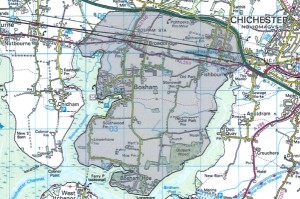
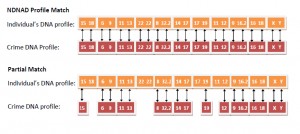
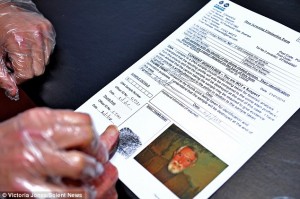

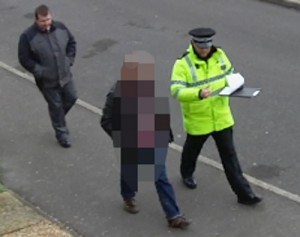
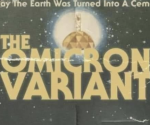
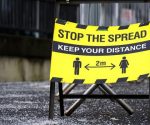













The island of Iceland was subjected to a DNA harvest (for research purposes) in 2014. I believe Icelanders were told that a financial donation would be made to ‘The Icelandic Rescue Services’ in respect of each & every DNA “donation” received. As Icelanders hold the Rescue Services in high regard some islanders felt “pressured” into “surrendering” DNA samples. One lady said the DNA sample collectors were on her doorstep at 7am the next day, ie less than 24 hours after the request had dropped onto her mat. There seems to be some sort of urgency in DNA data mining of North European groups…………………………………………………………………………………………………………………………………As the “Health” service appears to have an agenda of poison by vaccination/chemo “therapy” etc, I find the assertion that DNA data mining is for the benefit of the population, a little difficult to swallow. ……………….There have been “untimely” deaths of countless Scientists over the past few decades. I believe the areas of ‘Genetics and Cloning’ have not escaped these unfortunate occurrences. ……………..What the nefarious PTB are up to, one shudders to think. …………………………………….Caveat.. I have no knowledge of this subject, I simply read random articles on the internet. Your Bosham article was fascinating and, Keith Baxters “requirement” to “volunteer” DNA, leads me to wonder if “some groups” are getting desperate…….for some unknown reason………………………………………………………………the link is …..www.bbc.uk/news/magazine-27903831. Title…..’Iceland’s DNA: The world’s most precious genes’.